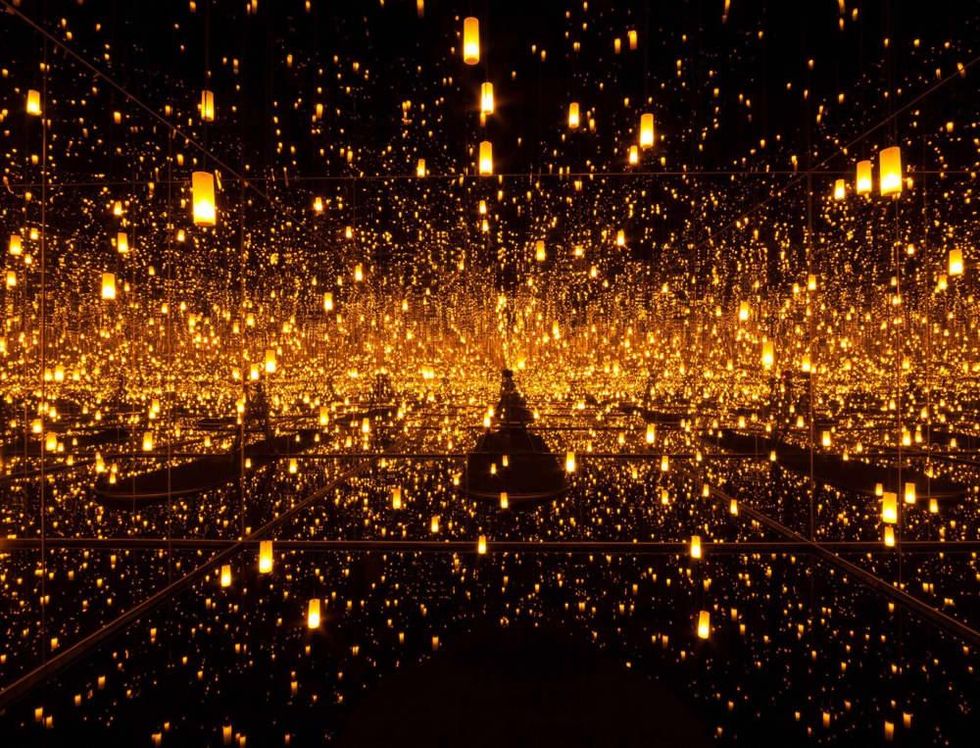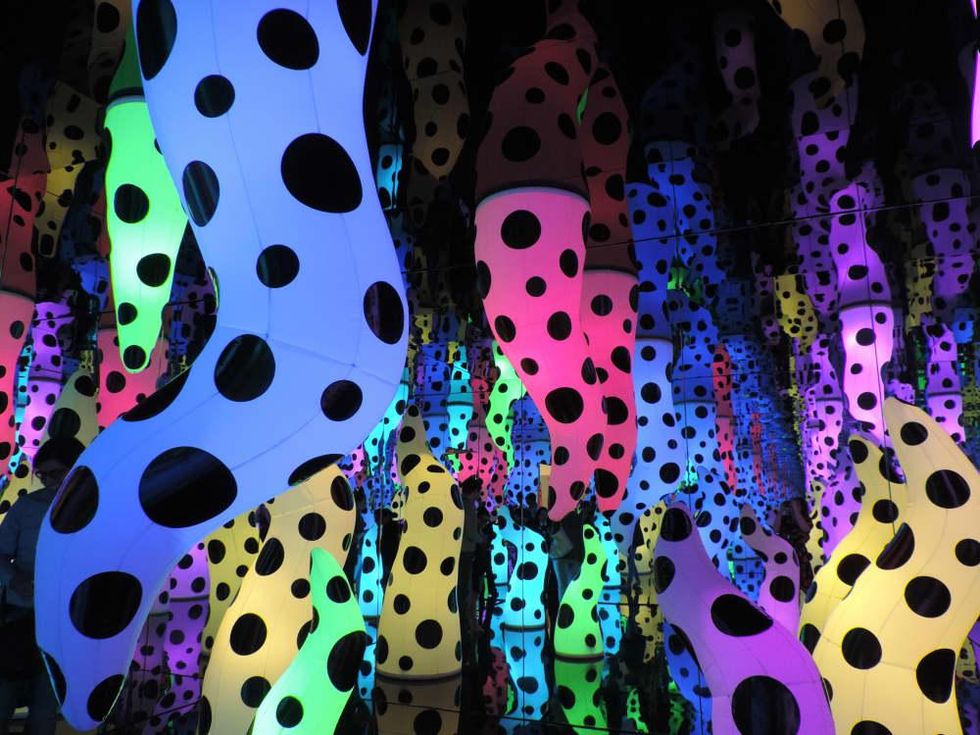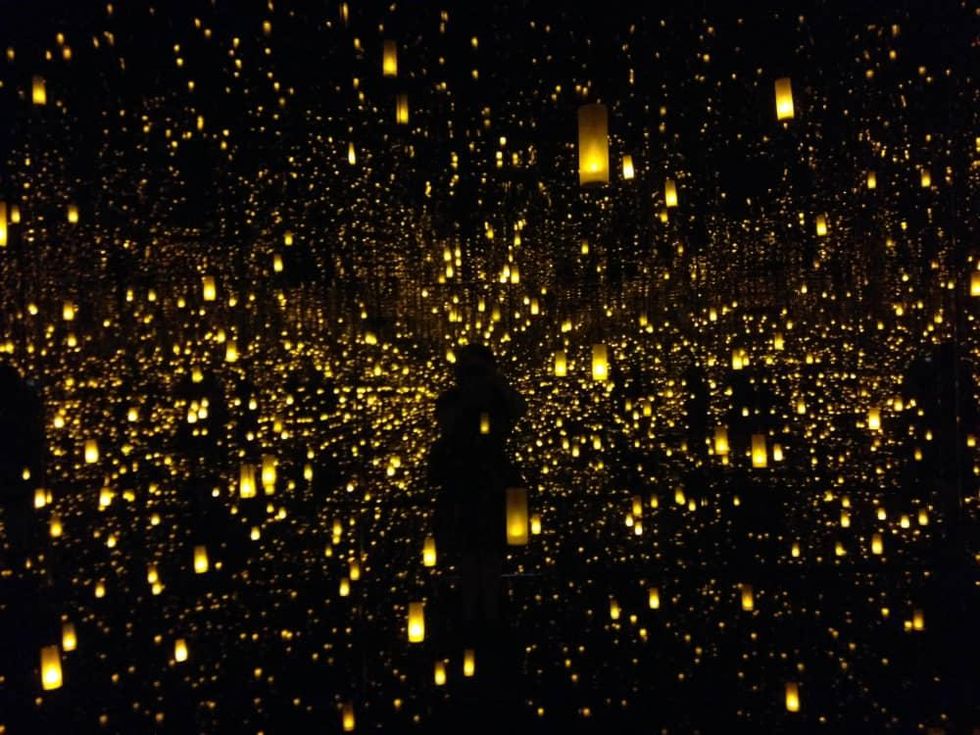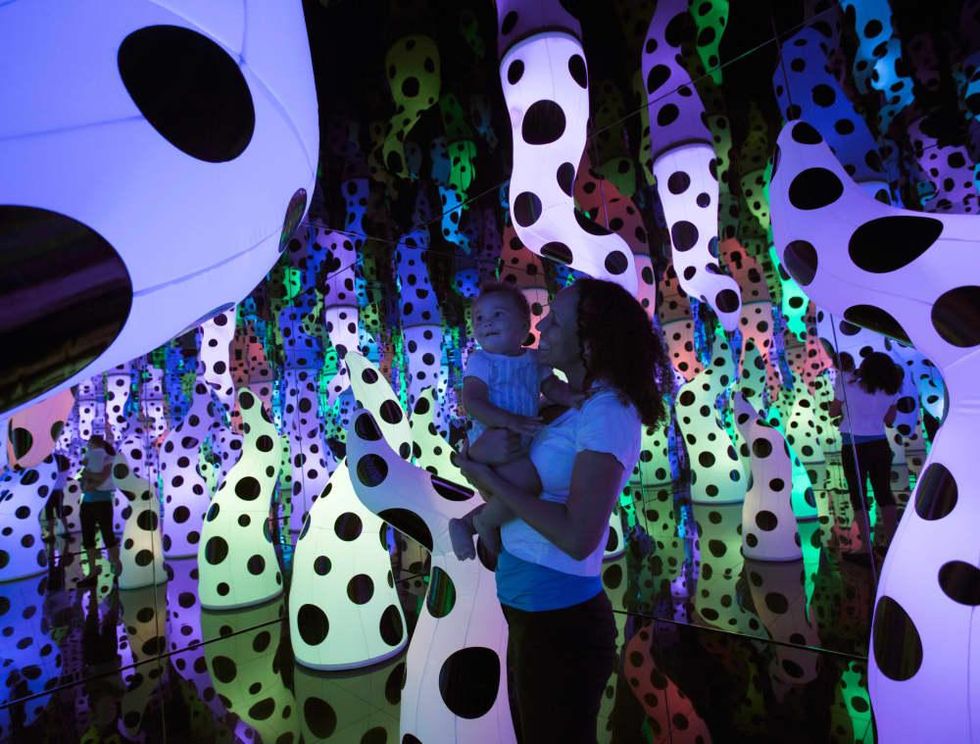End Of The Universe
Experience the End of the Universe at the MFAH in cool new summer exhibition
With the hot summer upon us, the Museum of Fine Arts, Houston is once again enticing us inside with some very cool immersive art. In the tradition of previous summer installations like Soto: The Houston Penetrable and Shadow Monsters, the new exhibition Kusama: At the End of the Universe allows visitors to physically enter the art of Japanese sculptor and painter, Yayoi Kusama, and thereby travel into beautiful and strange new dimensions.
The entirety of the End of the Universe can be experienced in a relatively short time, as it consists of four paintings; a large and rather whimsical yellow and black, fiberglass pumpkin sculpture, appropriately titled “Pumpkin;” and two of Kusama’s immersive Infinity Rooms. From the outside, these rooms look like large white boxes, which only a few people can enter together.
But to paraphrase a popular British science fiction show, once we get a turn to step inside each box, we find a wondrous world, seemly so much bigger on the inside.
“We wanted to do this exhibition celebrating our major acquisition of one of Kusama’s signature Infinity Rooms, but also because there’s a tendency to always look at a younger artist’s career and not a mature or older artist’s career,” explained Alison de Lima Greene, the MFAH’s Isabel Brown Wilson Curator of Modern and Contemporary Art, during a preview walk-through of the exhibition.
The 87 year old Kusama, who is still actively creating art in Tokyo, began her artistic career in the Japanese-style painting (nihonga) at the Kyoto Municipal School of Arts and Crafts in 1948.
“She would contemplate her subject for days, weeks, even months before putting first brush stroke to paper,” Greene explained.
In 1957, Kusama moved to New York where she became associated with the Pop and Minimalist avant-garde and artists like Joseph Cornell, Donald Judd and Andy Warhol. While in New York, and before returning to Japan in the 1970s, she first began creating her Infinity Rooms in the mid-1960s.
“There’re two basic aspects in Kusama’s work, one emphasizes the insubstantial and the other emphasizes the physical,” Greene said and each of the Infinity Rooms in the MFAH's exhibition reflect one of these themes.
Entering the slightly smaller installation, Aftermath of Obliteration of Eternity might be as close as the average museum goer is likely to get to the feeling of floating in space, as lanterns, invisibly hung throughout the room are multiplied into infinity by mirrors and a surrounding pool of water on the floor.
“I see this work related to certain rituals, particularly the Toro Nagashi ritual that comes at the end of the Bonn festival every summer in Japan. It’s a Buddhist ritual of honoring ancestors where you light lanterns and set them into the river where the lights wash out to the sea,” Green said, giving further insight into the piece.
Aftermath of Obliteration of Eternity, which Kusuma created in 2009 the year she turned 80, was recently purchased by the MFAH and will eventually find a permanent home in the Nancy and Rich Kinder Building. Construction on the new building is scheduled to begin next year.
The somewhat larger work, Love is Calling, represents the more physical aspects of Kusuma’s work and will likely be a favorite of both kids and their parents as they enter an alien world of soft, colorful and polka-dotted stalactites and stalagmites (or are they friendly tentacles). Kusuma herself recites her poem “Residing in a Castle of Shed Tears,” as explorers wander through the physical manifestations of her fears, hopes, and love.
--------------------
Kusama: At the End of the Universe is a timed and ticketed exhibition, as only a small number of visitors may enter the Infinity Rooms at the same time. Tickets do provide entry to the rest of the MFAH’s collection, including the High Society exhibition.
Yayoi Kusama, Aftermath of Obliteration of Eternity, 2009, wood, metal, glass mirrors, plastic, acrylic paint, LED lighting system, and water, the Museum of Fine Arts, Houston




